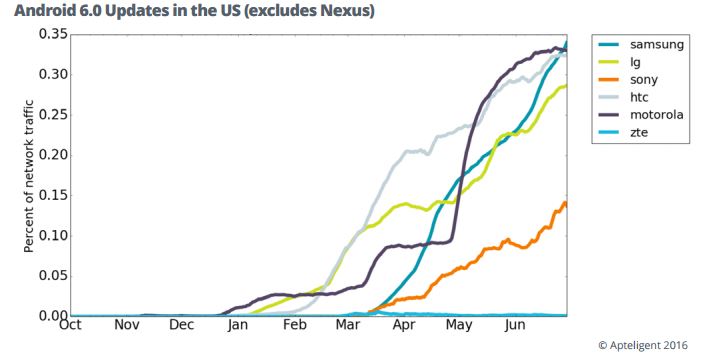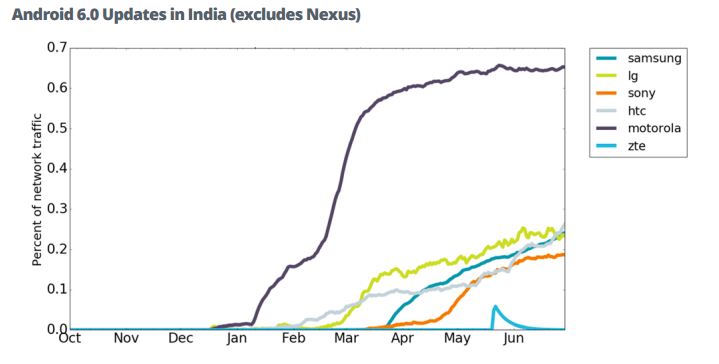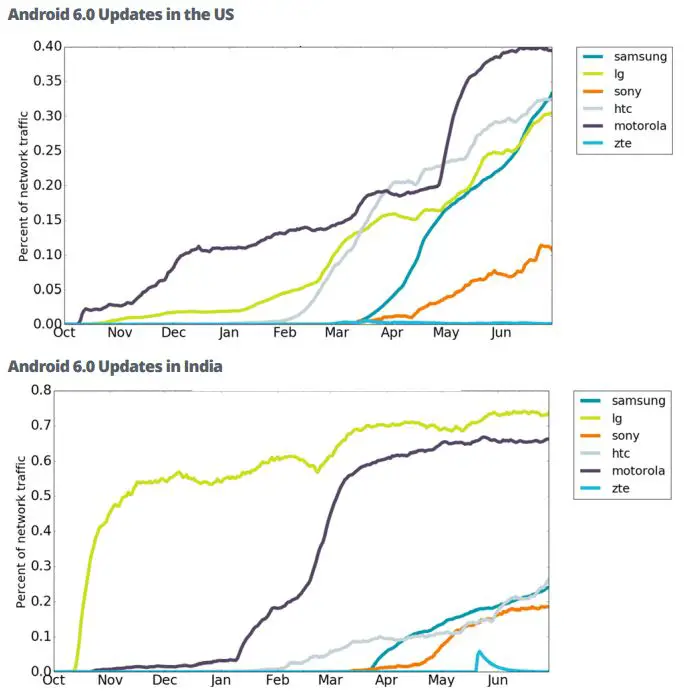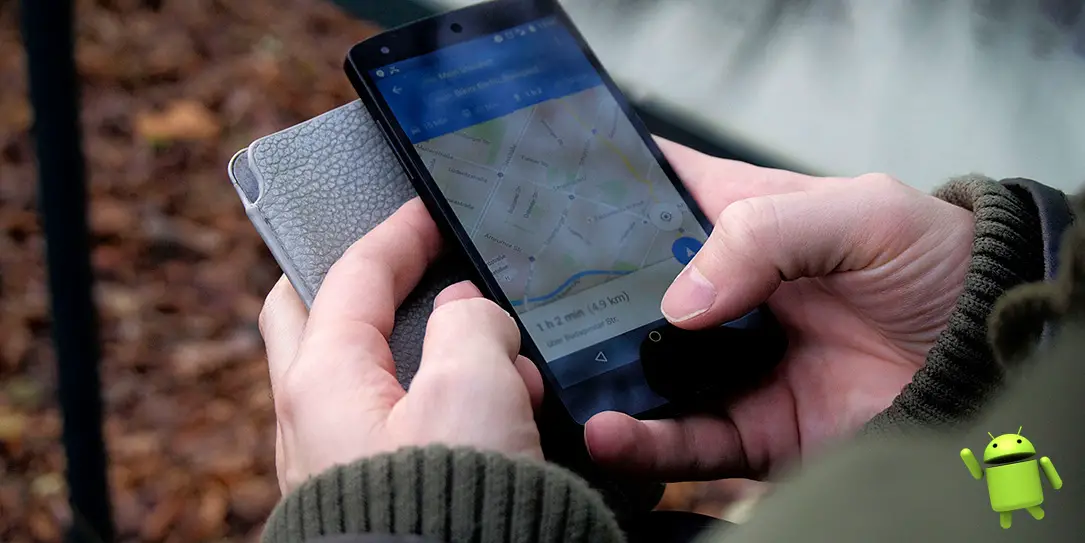Google’s OS has grown over the years into a powerhouse that spans across many Android OEM (original equipment manufacturer) makers. Unlike Apple, Android’s reach is far larger, utilizing many different manufactures giving it a distinct advantage. But with that expanded reach comes some compromise and challenges. Not all Android OEM makers are playing the same game as the rest of the field. One of the biggest issues facing Android users is frequency of updates and frequency of crashes. Apteligent has put together a report on Android OEM makers that addresses update speeds and crash rates.
One of the most common complaints about consumer Android devices is how long it takes to get the latest Android OS update. We examined device data for Samsung, LG, Sony, HTC, Motorola, and ZTE to determine which manufacturer pushes out OS updates the soonest. We excluded Nexus devices since they always receive the latest Android updates on the day they are released. For each manufacturer, we compared the time it took to upgrade from Android 5.x Lollipop to Android 6.0 Marshmallow. Below is a graph illustrating the update speeds for the aforementioned manufacturers in the US:

The report found that Motorola was the quickest at pushing the Android 6.0 update out, starting with a few devices such as the Moto X Pure Edition and then rolling it out more widely to other devices. LG also pushed Android 6.0 out to its G4 first then followed up a few months later to other devices. HTC rolled it all out at once, while both Samsung and Sony waited over 5 months before releasing the update to compatible devices. Apteligent compared the US Android OEM update numbers to those of India and found the same trend: Motorola is first, followed by HTC, then LG, while Samsung and Sony bring up the rear.

When Apteligent adds in Nexus devices to the chart, you can see LG and Motorola improve in the standings due to Google pushing updates to the Nexus 5X and Nexus 6 instantly. Huawei was not included in the company’s report.

When it comes to crash rates, Apteligent found that Sony had the least crashes of any of the Android OEM’s.
To determine which manufacturer has the lowest overall crash rate, we decided to analyze only apps that have over half a million app loads a day. These apps tend to have low crash rates and are highly optimized. Also newer devices will be a larger share of the population sample, which helps reduce the impact of older devices on the crash rate. Samsung in particular has a long tail of devices, and the older models tend to have higher crash rates. This way our analysis evens the playing field by focusing only on the most popular devices.

There are more interesting tidbits in Aptligent’s report which you can read at the link below. The bottom line here is, if you want quick updates from an Android OEM, Motorola is the one to pick. If you want instant updates for a few years to come though, Nexus is always the sure bet.
What do you think of Apteligent’s findings? Let us know in the comments below or on Twitter, Facebook and Google+.
[button link=”https://data.apteligent.com/download-report?report=apteligent-data-report-july-2016.pdf” icon=”fa-external-link” side=”left” target=”blank” color=”285b5e” textcolor=”ffffff”]Source: Apteligent[/button]Last Updated on January 23, 2017.










